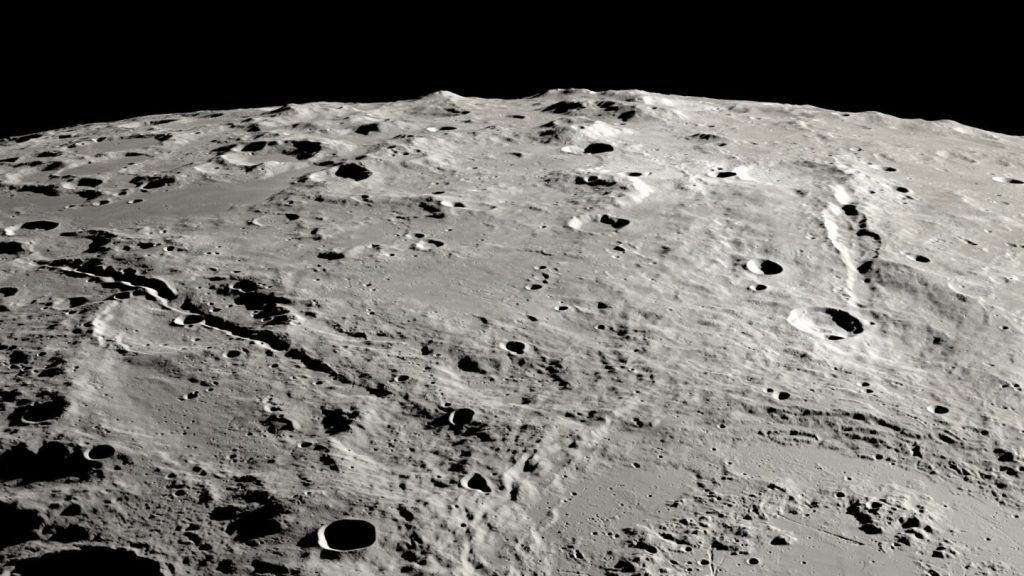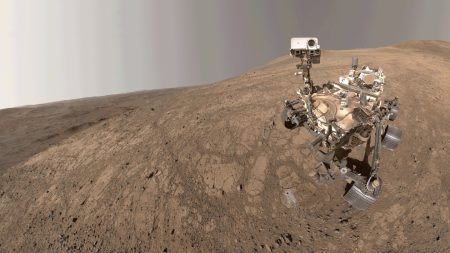Unveiling the Lunar Past: Asteroid Impact Creates Grand Canyons on the Far Side
New research has shed light on a dramatic event in the Moon’s distant past: a colossal asteroid impact that sculpted a pair of immense canyons on its far side. This discovery, based on data from NASA’s Lunar Reconnaissance Orbiter, offers valuable insights into the Moon’s geological history and has positive implications for future lunar exploration missions, particularly NASA’s Artemis program.
Billions of years ago, a massive asteroid, estimated to be 15 miles in diameter, collided with the Moon, leaving an indelible mark on its surface. The impact generated an immense basin and propelled a torrent of debris outwards at astonishing speeds, approaching 1 mile per second. This high-velocity debris rained down upon the lunar surface, carving out two enormous canyons, each comparable in scale to Arizona’s Grand Canyon, in a remarkably short span of just 10 minutes. This contrasts sharply with the millions of years required for the formation of Earth’s Grand Canyon, highlighting the sheer violence and intensity of the lunar impact event.
The energy unleashed by this asteroid impact was staggering, estimated to be over 130 times greater than the combined power of all nuclear weapons currently existing on Earth. This immense energy release underscores the catastrophic nature of the event and its profound influence on the Moon’s topography. The lead author of the study, David Kring of the Lunar and Planetary Institute in Houston, described the event as a "very violent, a very dramatic geologic process."
Fortunately for NASA’s Artemis program, which aims to return astronauts to the lunar surface this decade, the majority of the debris ejected by the impact was propelled away from the Moon’s south pole. This means that the targeted landing zone for Artemis, located near the south pole on the Moon’s near side, remains largely unaffected by the debris field. This preservation of the pristine lunar surface in the landing zone is crucial as it allows access to older rocks, dating back over 4 billion years, which offer valuable clues about the early history of both the Moon and Earth.
The discovery of these ancient rocks is particularly exciting for scientists as they provide a window into the early solar system. By studying these rocks, researchers can gain a better understanding of the processes that shaped the Moon and Earth during their formative years. The undisturbed nature of the landing zone ensures that these ancient rocks remain accessible to future lunar explorers, who will collect samples for detailed analysis back on Earth.
The research team is currently investigating whether these newly discovered canyons are permanently shadowed, similar to some craters at the lunar south pole. Permanently shadowed regions are of particular interest because they are believed to harbor significant deposits of water ice. This ice could be a valuable resource for future lunar missions, serving as a source of drinking water for astronauts and potentially even being converted into rocket fuel. The presence of water ice would significantly enhance the sustainability and feasibility of long-term human presence on the Moon.
The upcoming Artemis missions are poised to revolutionize our understanding of the Moon. The first Artemis mission, scheduled for next year, will send astronauts on a journey around the Moon. This will be followed shortly thereafter by a crewed landing on the lunar surface, marking the first human footsteps on the Moon since the Apollo era. These missions promise to unveil new secrets about our celestial neighbor and pave the way for a future where humans establish a sustained presence on the Moon, using its resources and conducting groundbreaking scientific research. The discovery of these ancient canyons adds another layer of intrigue to the lunar landscape and further underscores the importance of continued exploration.










